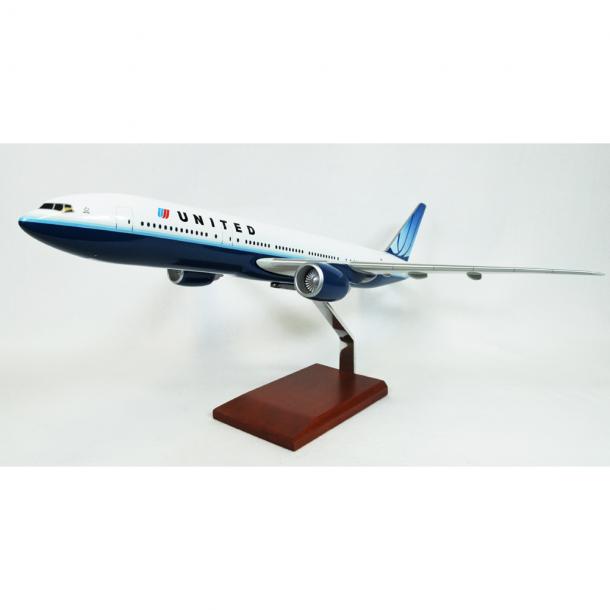B777-200 UNITED MODEL

Boeing 777-200 incorporates more advanced technologies than any other previous Boeing airliners and has been progressively developed into increasingly longer range developments. Boeing describe their 777 models using two characteristics: the first is the size of the fuselage affecting the number of passengers and the the amount of cargo that can be carried. The second characteristic is the range. Boeing incorporates advanced technologies in the 777s features including Honeywell LCD glass cockpit flight displays, fully digital fly-by-wire flight controls with emergency manual reversion, fully software-configurable avionics, electronic flightbag, use of composites, fiber optic avionics network and the largest, most powerful turbofan engines and the largest landing gear.
The 777-200 was launched on October 1990 and was available in two versions, the basic 777-200 and 777-200IGW. It has been redesignated as the 777-200ER. The 777-200LR variant (Longer Range) is the worlds longest range commercial airplane and in 2000, was listed as one of the top 100 list in Popular Science Magazine. The 777-200 was the initial A-market model.
The 777-200s maiden flight was on June 12, 1994, and was granted certification by the FAA and JAA on April 19, 1995. The basic 777-200 was launched in October 1990. The United Airlines was the first customer of the 777-200 and was delivered to them in May 1995. In February 1997, the first 777200IGW/ER was delivered to British Airways.
The 777-200 is powered by two 77,000 Pratt and Whitney PW4077 turbofans. It has a typical cruising speed of 905 km/h and has a range of 229 tonne. The 777-200 has a flight crew of two and has a seating capacity for 305 in three classes or up to 440. There is approximately 40,000 cubic feet of volume in a 777-200.
As of 2003, a total of 452 777-200 orders were received, with 379 delivered.

Отзывы ещё не добавлены